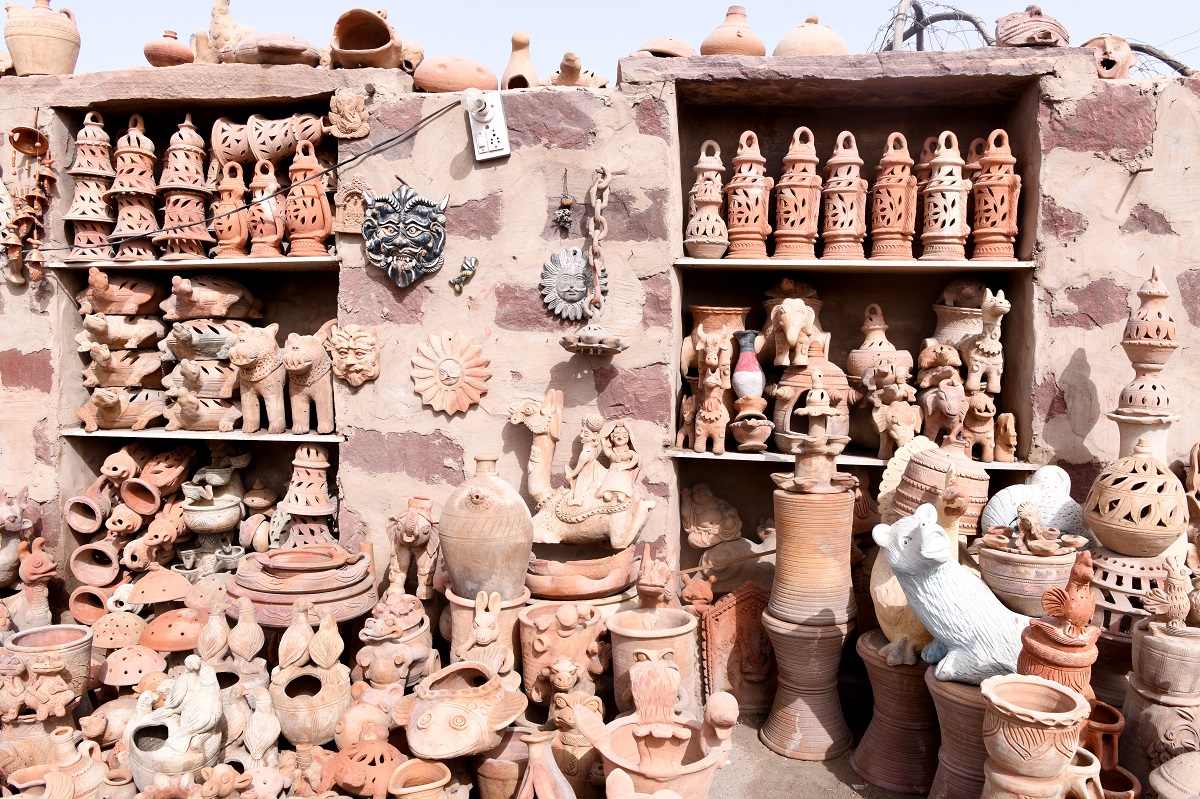Vulnerable Heritage
If you’ve travelled to Jaisalmer by train recently, you could not have missed drinks and eatables being served in earthenware. With an eye on reducing the use of plastic, Jaisalmer along with Barmer, are two of several hundred such earmarked stations across the country’s rail network. Spelling good times ahead for the 350 odd families generationally engaged in clay-work here, these are also the two major railheads in the vicinity of sleepy, sandy Pokhran famously associated with India’s nuclear experiments. A generally widespread inclination towards a pandemic-spurred healthy lifestyle has further spiked the demand for terracotta kitchenware.
The trend is likely to gradually revive not just a vulnerable craft, but also the fortunes of the potters engaged in red clay-work. Pottery is a family affair. An early morning visit to Kumharon Ki Pol, where much of Pokhran’s potter community lives and works, will find members occupied with mixing, kneading, or shaping clay at the wheel. Others lay out the pale sand-hued items to dry, add or etch design elements, and apply geru (a natural pigment derived by mixing clay and ferric oxide) for the defining colour. “The kiln is usually fired once a month, when we have a sufficient amount of articles to load, more than once when we have large orders,” shares Guddi Kumar.

Pokhran pottery is sturdy and long-lasting; it is no wonder that household articles of daily use like kulhars, matkas, paraats, and handis are in great demand. “I made this for my son’s wedding eight years ago,” Guddi proudly holds out a well-worn and burnished imam-dasta. In another corner of her mud-walled yard, her school-going granddaughter carefully rifles through their readied stock of toys, oil lamps, foot-scrubbers, planters, and other decorative items, for the benefit of browsing visitors. Across the dusty street from her, 50-year-old Achala Ram, ably assisted by his son Karan, is deftly loading a kiln for multiple orders bound for Mumbai, Jaipur and Jodhpur.

Monumental Heritage
A stone’s throw from the Kumharon ki Pol is the eye-catching Balagarh Fort, commonly referred to as the Pokhran Fort. A hoary desert fortification, it is said to hark back to the 14th century, by some accounts possibly even to the 8th century. As is common in warring lands, the Balagarh changed hands several times in its long life. The fort as seen today is a 16th century edifice, and is said to have been built over an earlier abandoned structure by then ruler of Marwar, Rao Maldeo. Some hundred years later it was granted to Maha Singh as part of a handsome bequest, and continues to house his descendants. The imposing structure in red and yellow sandstone is open to visitors and houses a museum and well-stocked library. It also doubles as a heritage stay.

Also Visit
Ramdevra, a mere 12 kms from Pokhran, is a prominent centre of faith associated with Baba Ramdev, a much-revered folk deity from the 14th century. He is believed to have taken his samadhi here at the age of 33 years. The temple, built by Maharaja Ganga Singh of Bikaner in 1931, attracts devotees from Rajasthan, Gujarat, Haryana, Punjab, as well as Sindh in Pakistan.
Information box
Fun Fact: Ramdevra train station essayed a key role in Satyajit Ray’s 1974 film Sonar Kella, in which his fictional albeit immensely popular detective Feluda made his celluloid debut.

Connectivity: Pokhran is well-connected by road with Jaisalmer (110 kms), while Jodhpur at a distance of 170 kms is the closest airport.
Stay: Fort Pokhran
Best Season: Winter




